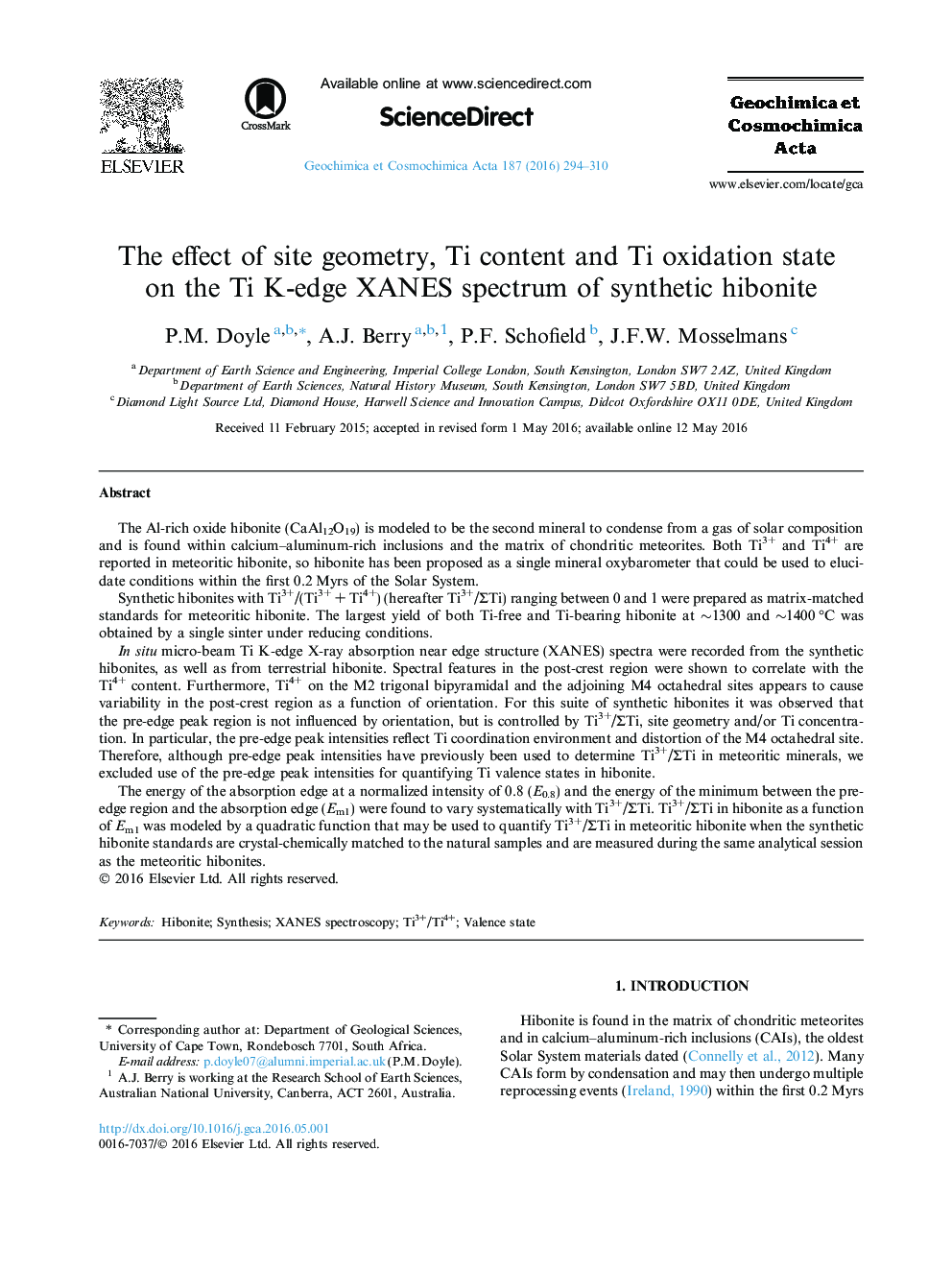| Article ID | Journal | Published Year | Pages | File Type |
|---|---|---|---|---|
| 6437332 | Geochimica et Cosmochimica Acta | 2016 | 17 Pages |
The Al-rich oxide hibonite (CaAl12O19) is modeled to be the second mineral to condense from a gas of solar composition and is found within calcium-aluminum-rich inclusions and the matrix of chondritic meteorites. Both Ti3+ and Ti4+ are reported in meteoritic hibonite, so hibonite has been proposed as a single mineral oxybarometer that could be used to elucidate conditions within the first 0.2 Myrs of the Solar System.Synthetic hibonites with Ti3+/(Ti3+ + Ti4+) (hereafter Ti3+/ΣTi) ranging between 0 and 1 were prepared as matrix-matched standards for meteoritic hibonite. The largest yield of both Ti-free and Ti-bearing hibonite at â¼1300 and â¼1400 °C was obtained by a single sinter under reducing conditions.In situ micro-beam Ti K-edge X-ray absorption near edge structure (XANES) spectra were recorded from the synthetic hibonites, as well as from terrestrial hibonite. Spectral features in the post-crest region were shown to correlate with the Ti4+ content. Furthermore, Ti4+ on the M2 trigonal bipyramidal and the adjoining M4 octahedral sites appears to cause variability in the post-crest region as a function of orientation. For this suite of synthetic hibonites it was observed that the pre-edge peak region is not influenced by orientation, but is controlled by Ti3+/ΣTi, site geometry and/or Ti concentration. In particular, the pre-edge peak intensities reflect Ti coordination environment and distortion of the M4 octahedral site. Therefore, although pre-edge peak intensities have previously been used to determine Ti3+/ΣTi in meteoritic minerals, we excluded use of the pre-edge peak intensities for quantifying Ti valence states in hibonite.The energy of the absorption edge at a normalized intensity of 0.8 (E0.8) and the energy of the minimum between the pre-edge region and the absorption edge (Em1) were found to vary systematically with Ti3+/ΣTi. Ti3+/ΣTi in hibonite as a function of Em1 was modeled by a quadratic function that may be used to quantify Ti3+/ΣTi in meteoritic hibonite when the synthetic hibonite standards are crystal-chemically matched to the natural samples and are measured during the same analytical session as the meteoritic hibonites.
